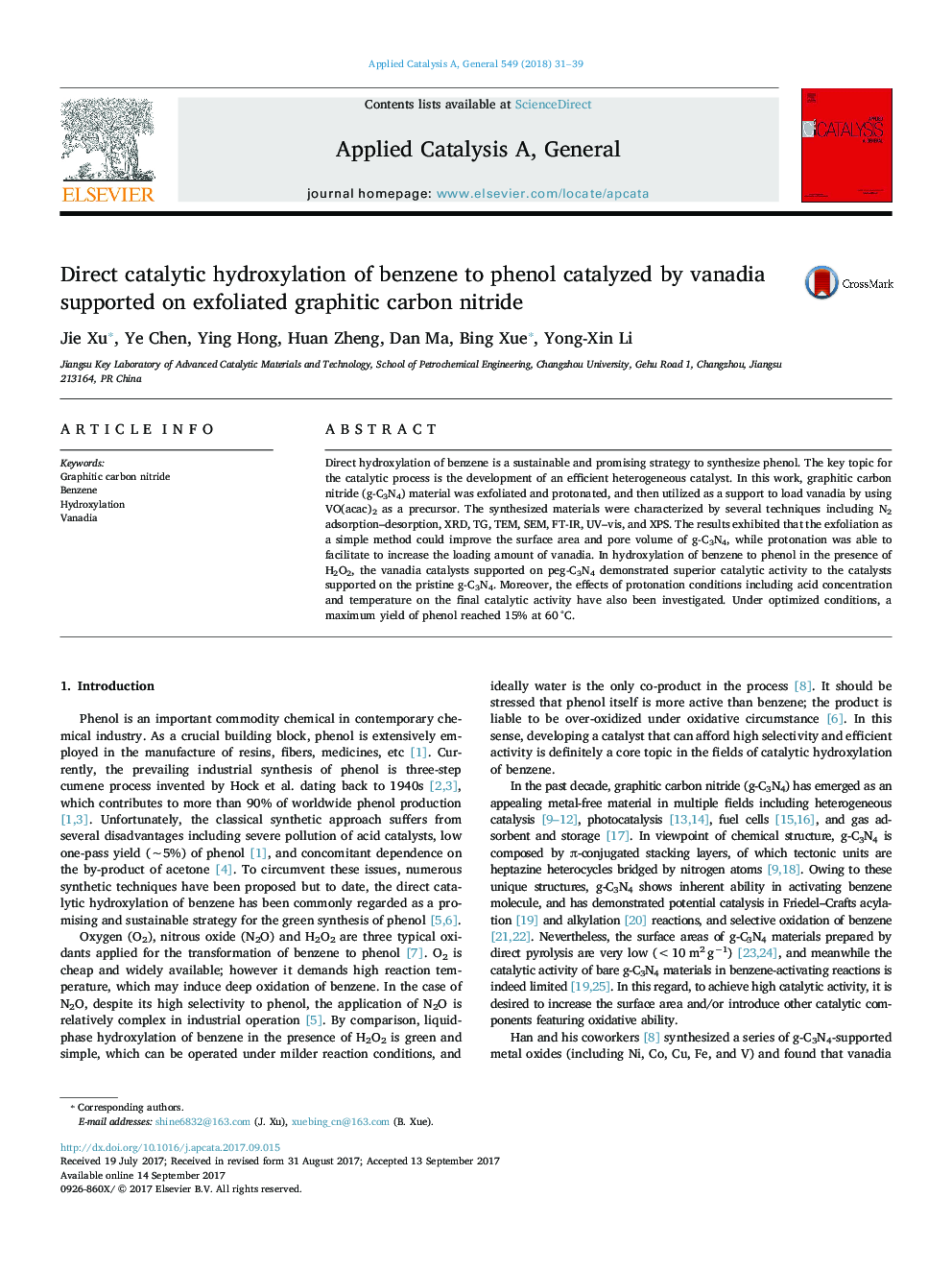| Article ID | Journal | Published Year | Pages | File Type |
|---|---|---|---|---|
| 6453191 | Applied Catalysis A: General | 2018 | 9 Pages |
â¢G-C3N4 materials treated by exfoliation and protonation procedures.â¢Simpler and more eco-friendly method than that applied for mesoporous g-C3N4.â¢Protonation increased the percentage of terminal amino groups.â¢Vanadia supported on peg-C3N4 showed superior activity to those on pristine g-C3N4.
Direct hydroxylation of benzene is a sustainable and promising strategy to synthesize phenol. The key topic for the catalytic process is the development of an efficient heterogeneous catalyst. In this work, graphitic carbon nitride (g-C3N4) material was exfoliated and protonated, and then utilized as a support to load vanadia by using VO(acac)2 as a precursor. The synthesized materials were characterized by several techniques including N2 adsorption-desorption, XRD, TG, TEM, SEM, FT-IR, UV-vis, and XPS. The results exhibited that the exfoliation as a simple method could improve the surface area and pore volume of g-C3N4, while protonation was able to facilitate to increase the loading amount of vanadia. In hydroxylation of benzene to phenol in the presence of H2O2, the vanadia catalysts supported on peg-C3N4 demonstrated superior catalytic activity to the catalysts supported on the pristine g-C3N4. Moreover, the effects of protonation conditions including acid concentration and temperature on the final catalytic activity have also been investigated. Under optimized conditions, a maximum yield of phenol reached 15% at 60 °C.
Graphical abstractDownload high-res image (103KB)Download full-size image
